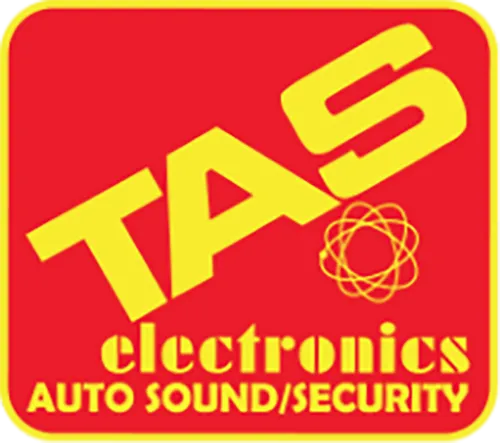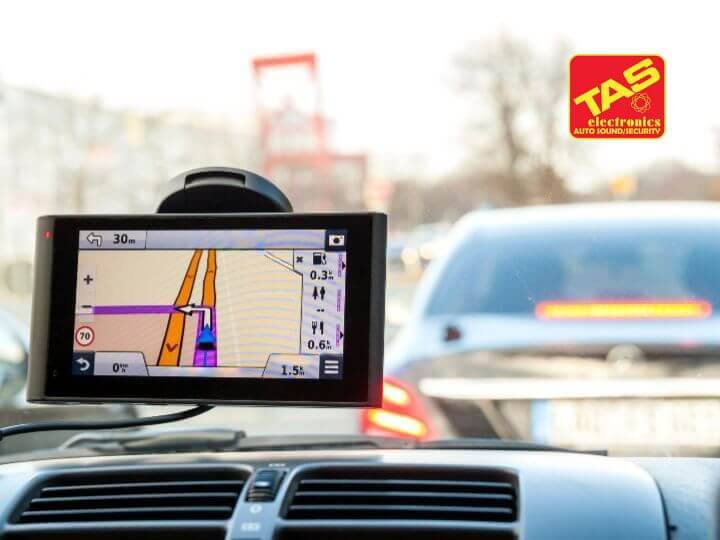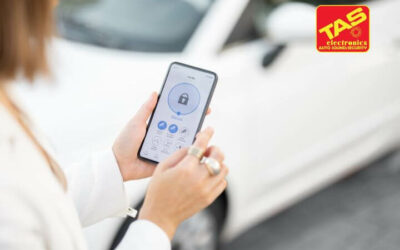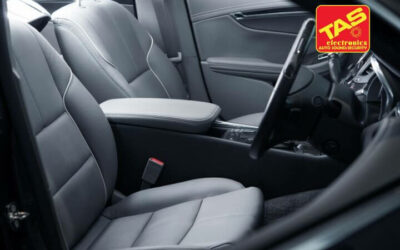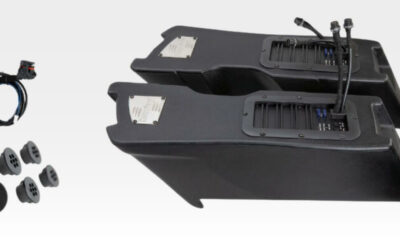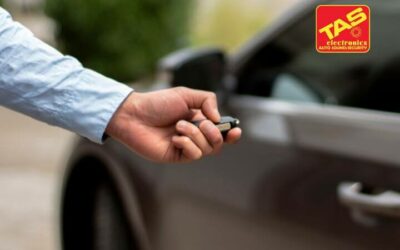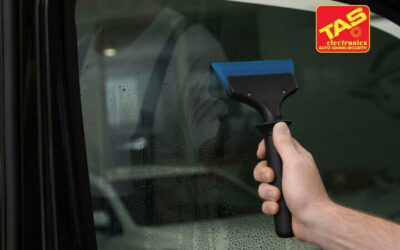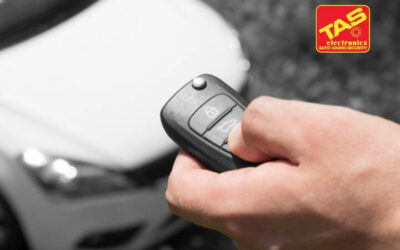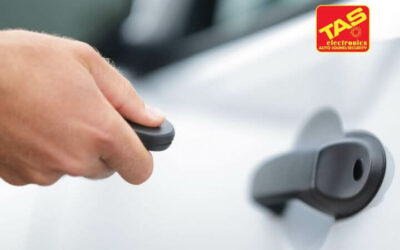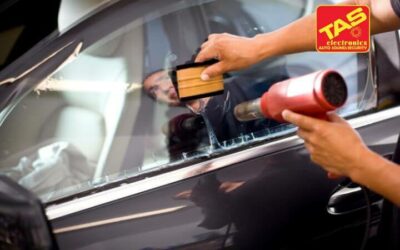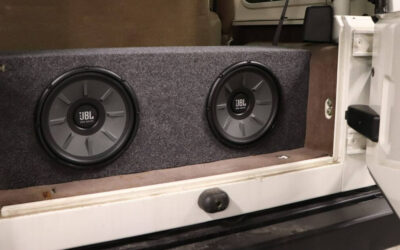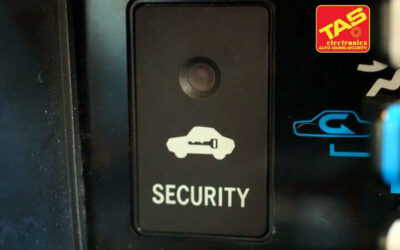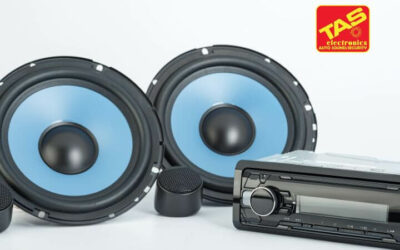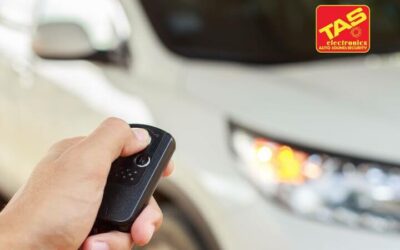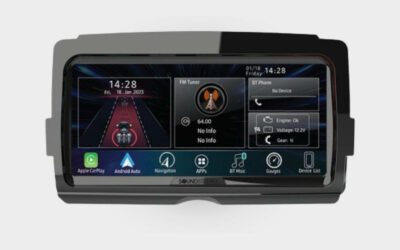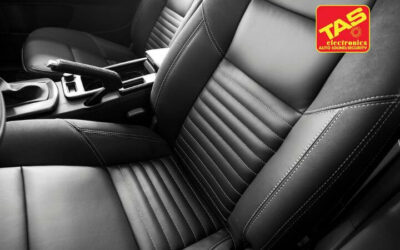Navigating the world of modern automotive technology can be tricky, especially when it comes to the glaring issue of reduced visibility and excessive glare caused by in-car screens and devices. In this informative article, we delve deep into the role of screens and devices in cars, unpack the challenges posed by them, discuss technological solutions to mitigate glare and improve visibility, and touch upon relevant regulations and standards in place. Additionally, we share essential best practices for ensuring safe use of screens while driving and also provide a sneak peek into the future trends that could revolutionize this field. Embark on this insightful journey with us and TAS Electronics to gain a more comprehensive understanding of this significant and rapidly developing component of our everyday driving experience. Glare is a perceived brightness that impairs vision or that causes discomfort. It is often associated with harsh lighting environments or direct sunlight. Glare is particularly problematic when it occurs on windshields and windows, impairing the visibility of drivers or occupants in a building.
There are several types of glare, but the most common include disability and discomfort. Disability glare describes a situation where visibility is actually impeded, making it difficult for the person to see. For instance, when direct sunlight hits a car’s windshield, the driver may find it difficult to see the road. On the other hand, discomfort glare refers to situations where visibility is not necessarily impeded, but the brightness causes strain or discomfort.
Glare does not only cause discomfort, but it can also lead to more serious issues such as long-term eye damage. Prolonged exposure to high levels of glare can cause irreversible damage to the retina, leading to conditions such as cataracts and macular degeneration.
Visibility refers to the ability to observe objects and elements in one’s surroundings. For drivers, visibility is a crucial component of safe driving as it allows them to identify potential hazards, other vehicles, and pedestrians on the road. Visibility can be affected by various factors such as weather conditions, lighting, and distractions.
Poor visibility is a leading cause of traffic accidents around the world. In many cases, these accidents could have been prevented if the driver had been able to see clearly. This problem emphasizes the importance of measures to improve visibility for drivers, such as using anti-glare solutions on windshields and wearing sunglasses while driving in the sun.
Excessive glare and poor visibility pose serious threats to safety on the road. First, they increase the risk of accidents by making it difficult for drivers to see clearly. Second, they can lead to long-term health issues like eye strain, discomfort, and in worse cases, damage to the retina.
Moreover, glare can also impact productivity. In office environments, for instance, glare from windows or computer screens can impede visibility, leading to eye strain and discomfort, which eventually impact workers’ productivity levels.
Given these issues, there is a significant degree of importance placed on mitigating the effects of glare to improve visibility and overall safety. From a safety perspective, reducing glare on roadways and in cars can significantly reduce the risk of accidents, potentially saving lives in the process. From a productivity standpoint, minimizing glare in work and home environments can boost comfort and productivity.
Measures to Minimize Glare and Improve Visibility
Using Anti-Glare Solutions
There are several measures one can take to reduce glare and improve visibility, the first of which is to employ anti-glare solutions. Anti-glare solutions can range from sunglasses to windshield covers, and even anti-glare screen protectors for computer monitors.
Importance of Good Lighting
Good lighting is also a fundamental element in preventing glare and improving visibility. Light should be natural and evenly distributed in the room. For instance, a desk lamp with a shade can help to direct the light downward, minimizing the chances of it reflecting off the computer screen and causing glare.
Proper Use of Window Furnishings
Window furnishings also play a key role in controlling the level of sunlight entering a room. These include curtains, blinds, and window films. By controlling the amount of sunlight that enters a room, these furnishings can help to reduce the occurrence of glare, in turn improving visibility.
Implementing these measures can greatly reduce the occurrence of glare and significantly improve visibility, leading to safer roads and more comfortable indoor environments. At the end of the day, reducing glare and improving visibility is not just about comfort but also, and more importantly, about safety. Therefore, whether you are driving, working in an office, or just chilling at home, it is crucial to take the necessary steps to minimize glare and improve visibility.
The Role of Screens and Devices Inside the Car
Modern vehicles have progressed significantly ever since their introduction. From the era of manual controls, the automotive industry has evolved to a period where digital screens and devices govern most aspects of driving. Today, one of the most prominent enhancements within our cards include the digital display screens and other advanced electronic devices.
Types of Screens and Devices in Modern Vehicles
Modern vehicles are equipped with several types of screens and devices that aim at increasing the convenience and safety of the drivers. These include infotainment systems, GPS displays, screens for rear and side-view cameras, digital dashboards showing the car’s status, and even heads-up displays. As automobiles get smarter, the list of digital devices in cars is continuously expanding.
Functions and Uses of Car Screens and Devices
The function of these screens and devices aren’t limited to aesthetics; they serve essential purposes. Infotainment systems provide information about the vehicle, entertainment options, and allows integration with smartphones. GPS displays provide navigational aid, while screens providing rear and side views for cameras aid in parking and changing lanes. Digital dashboards provide real-time information about the car’s health, ranging from fuel level to engine temperature. Some advanced cars even have screens to handle climate control inside the car, replacing traditional buttons.
Challenges Associated with Car Screens and Devices
Despite their advantages, screens, and devices in cars present certain challenges. Notably, their readability is often affected by glare, particularly during daylight hours. Moreover, the increasing complexity resulting from too many functionalities can lead to cognitive overload for drivers, making these devices distracting. As such, there’s an urgent need to overcome these challenges for safer, more efficient vehicle operation.
Glare and Visibility Issues with Car Screens and Devices
Glare is a prevalent issue with screens and devices in cars. It can affect visibility, leading to potential safety risks.
Factors That Contribute to Glare
Various factors can contribute to glare on car screens. The sun’s direct or indirect light, reflections from other objects, the screen’s position relative to the driver, and the viewing angle can all induce glare. Moreover, the screen’s brightness and contrast levels can further enhance the perception of glare.
Impact of Glare on Device Visibility
Glare can severely hamper the visibility of car screens and devices. When light shines on the screen, it’s reflected off, causing the driver to squint or adopt uncomfortable positions to view the content. This not only affects the device’s functional utility but could also lead to dangerous driving conditions by distracting the driver.
How Screens contribute to Visual Distractions while Driving
Apart from the direct effects of glare, screens can also lead to visual distractions. With the rise of smart cars, drivers have a plethora of information at their fingertips. But constant attention to the screens—be it for navigation, entertainment, or vehicle monitoring—takes their gaze off the road, leading to potential hazards.
Technologies Addressing Glare and Improving Visibility
Given the prominence of screens in modern cars, manufacturers are investing in technologies that aim to minimize glare and improve visibility.
Anti-Glare and Anti-Reflection Technologies
Anti-glare technologies, such as matte finish screens and glare reducing films, are becoming common in car screens. Companies are also exploring anti-reflective treatments that decrease the amount of light reflected off the screen. These treatments can range from special coatings to sophisticated nano-structures that manipulate light behavior at a microscopic level.
Software-Based Solutions for Reducing Screen Glare
Apart from hardware solutions, software-based solutions like adaptive brightness and contrast also help manage glare. These smart solutions gauge ambient light and adjust screen settings to ensure optimal visibility. Night modes, which employ darker themes and softer lights, are another common software solution for minimizing distraction and improving visibility.
Hardware Improvements for Enhanced Visibility
Hardware improvements, such as advancements in screen technology, also play a crucial role in enhancing visibility. High-resolution screens, OLED screens, and quantum-dot displays are the frontier in this regard. These screens provide sharp images, vibrant colors, and deep blacks, thus offering excellent visibility under varying light conditions.
Continuous advancements in these areas are crucial in ensuring that the rapid digitization of cars does not affect safety. As a driver, understanding these technologies and their capabilities can aid in making a more informed choice while selecting a car.In the modern era, technology has become an integrated part of our vehicles, enhancing driving experiences with various digital features such as GPS navigation, entertainment systems, and even electric car interfaces. However, with the rise of digital displays in our cars, the need for regulations and standards for these displays is more significant than ever. These rules help ensure safety and usability, reducing distractions and potential hazards.
Existing Regulations for In-Car Screen Brightness and Glare
One of the areas that have seen considerable regulation is the brightness and glare emitted by in-car screens. Visual distractions can be as dangerous as physical ones when driving, and bright or overly reflective screens can impair a driver’s ability to see the road clearly, especially during night-time driving.
In many countries, standards are established to mitigate the risks associated with the use of in-car screens. In Europe, the United Nations Economic Commission for Europe (UNECE) has regulations that demand manufacturers to ensure that the in-car displays do not reflect undue or glaring light onto the driver. These rules recognize the varying nature of light conditions that drivers encounter, ranging from night-time settings to daytime brightness and moving into and out of tunnels, hence requiring the manufacturers to design displays that can adjust according to these conditions.
In the United States, the National Highway Traffic Safety Administration (NHTSA) has provided guidelines rather than specific regulations but still emphasizes the importance of reducing cognitive distraction, which can result from difficult-to-read displays and excessive brightness.
Standards for Screen Visibility in Different Lighting Conditions
Apart from the issue of glare and brightness, screen visibility in different lighting conditions is another matter that requires standardization. Drivers must be able to discern information on the screen across a broad spectrum of lighting conditions. This need entails both the visibility of the screen in low-light conditions and avoiding visibility issues due to direct sunlight or other bright lights.
Manufacturers, therefore, design screens with backlights and adjust the color schemes to increase contrast, thereby enhancing readability. Standards like the ISO 15008 provide best practices in this regard, which specify minimum requirements for visual presentation to ensure compatibility with road safety.
The standards also propose the use of auto-dimming features, which automatically adjust the screen’s brightness based on the ambient light. This feature helps the screen remain equally accessible, whether in direct sunlight or in the cover of the night.
Overall, the goal of regulations and standards concerning in-car screens and devices is to increase safety by reducing visual impairments and distractions. While technology continues to advance at a rapid pace, these regulations will need to adapt and change accordingly to guarantee the safe integration of digital displays into our vehicles.
Best Practices for Enhancing Screen Visibility and Reducing Glare
The delight of owning a modern car comes with the presence of an in-car entertainment system or an infotainment screen. These sleek, sophisticated screens hold pivotal control to essential vehicle functionalities like GPS navigation, multimedia management, and vital vehicle statistics. However, common problems encountered by drivers are screen glare and loss of visibility, leading to distractions or unnecessary strain while driving. This guide will delve into the best practices for enhancing screen visibility and reducing glare associated with in-car screens.
Tips for Positioning and Adjusting In-Car Screens
Proper placement and adjustment of in-car screens are crucial to counteract problems linked to screen glare and visibility. Firstly, invest in a car mount that offers flexibility in positioning the screen. It will allow for adjustments to avoid direct sunlight and headlights which can cause intense glare. It is advisable to position the screen slightly tilted downwards and away from the line of sight. This positioning prevents potential distractions and avoids sun reflections.
Consider adjusting seats, steering wheels, or rear-view mirrors to help improve the line of sight to the in-car screen. Having a clear, unobstructed view will enhance screen visibility and driving safety.
Polarized sunglasses come in handy when driving under bright sunlight. They can decrease glare and ensure better visibility not just on the roads but also on the infotainment system or the screen. However, some screens can turn invisible when viewed through polarized sunglasses. It is recommended to test this before purchasing sunglasses for driving.
Finally, keeping the screen clean is an often-overlooked but crucial practice. Dust, fingerprints, and smudges can reduce visibility and cause a distracting glare. Wiping the screen regularly with a microfiber cloth can significantly enhance visibility and user experience.
Recommendations for Screen Settings and Use
After physically adjusting the position and orientation of the in-car screens, there are several settings within the device software that can help improve visibility and manage glare.
Most in-car screens allow for brightness and contrast adjustments. During the daytime, higher brightness levels can counteract the intensity of sunlight, while during the nighttime, reducing brightness to a comfortable level can help prevent eye strain.
Also, many infotainment systems come with night mode settings that adjust screen colours to be less straining on the eyes under low light conditions. If your screen offers this feature, use it regularly.
Another useful feature is the automatic brightness control found in some models that adapt screen brightness based on the surrounding light conditions. If this feature is available, utilize it for a hassle-free experience.
In terms of use, try to minimize the need for constant interaction with the screen while driving. Set your navigation course, music playlist or vehicle statistics you wish to track before you start driving. If you must interact with the screen, use voice-activated controls to maintain focus on the road.
By following these best practices, drivers can significantly enhance screen visibility, reduce glare, and enjoy a safer and more enjoyable driving experience with their in-car screens.
Future Trends in Addressing Glare and Visibility Issues
Glare and visibility issues have been massive concerns in various industries such as Consumer Electronics and Automotive. These issues can lead to discomfort, undermine productivity, and even pose safety risks. The modern world, with its numerous digital screens, is especially high-risk. However, the tech world is well-aware of the problem. Continuous research and innovations reveal various future trends in addressing glare and visibility issues.
Developments in Screen Technology
Rapid advancements in screen technology play a critical role in combating glare and visibility issues. The current focus is on creating screens that can adjust their brightness and contrast ratios depending on the lighting situation, which is especially important for devices used in both high-light and low-light environments. Various smartphones and tablets have already introduced adaptive brightness features for this, which would automatically adjust the screen’s brightness based on the surrounding light conditions.
Moreover, light-filtering technology has become a hot topic as it can minimize the amount of harmful blue light that digital screens emit. Several smartphone manufacturers have started incorporating light-filtering technology into their products. This feature can reduce eye strain and improve visibility under various lighting conditions.
Another area of focus is on the creation of anti-glare screens. These screens undergo special treatment to scatter reflected light, reducing the harmful impact of glare. Currently, most devices come with anti-glare films, but the trend moves towards inherently anti-glare screens. This can potentially eliminate the need for additional anti-glare accessories, offering a permanent solution.
In terms of material development, researchers are exploring the possibility of utilizing matte and other non-reflective materials that can effectively deal with glare issues. The goal is to get these materials into mainstream production, reducing the overall production costs.
Future Regulations for In-Car Screens and Devices
Given the increased use of screens and devices in vehicles, future trends also indicate that there will be stricter regulations for in-car screens and devices. Digital touchscreens have quickly replaced knobs and buttons in many modern cars. While these screens undoubtedly offer numerous benefits, they can also cause visibility issues, particularly in bright sunlight.
As such, automotive manufacturers and regulatory bodies are focusing on creating design guidelines and standards for in-car screens to minimize glare. Improved interface designs are being proposed, with features like larger buttons, bolder fonts, and brighter colors to increase visibility. An emphasis is also being placed on positioning these screens in less glare-prone areas of the vehicle interior.
Regards to technology, future cars might come with in-built anti-glare and light-filtering technologies adapted from consumer electronics. This way, drivers and passengers can enjoy a seamless and safe in-car screen experience, regardless of the external lighting conditions. Regulatory bodies might also consider mandatory glare test for these screens as part of safety certifications in the future.
All these future trends and developments indicate an increasing awareness of, and emphasis on, addressing glare and visibility issues. Through consistent effort and innovation, it is expected that these issues will become less of a problem in the coming years. However, as technology continues to evolve, it’s critical to keep investigating and establishing new solutions.
1. What benefits does reducing screen glare in cars provide?
Reducing screen glare enhances driver safety by improving visibility, preventing eye strain, and lessening potential distractions. Improved visibility can enable better-focused driving and faster response times.
2. How effective are anti-glare screens in cars?
Anti-glare screens in cars are highly effective. These devices minimize reflections and help to prevent eye fatigue. Consequently, these screens can improve visibility and ensure seamless use of in-dashboard electronics, even under challenging lighting conditions.
3. What methods can be employed to reduce glare on car screens?
Several methods can be used to reduce glare on car screens. Applying a matte screen protector or anti-glare film can help scatter light and reduce reflections. Additionally, angling the screen away from direct sunlight or bright lights can also decrease glare.
4. Can polarized sunglasses help reduce glare from car screens?
Yes, polarized sunglasses can aid in reducing screen glare. These sunglasses can filter out the horizontally polarized light that bounces off smooth surfaces and causes glare. Polarized glasses may significantly improve vision while driving, especially in high-glare situations.
5. Are there specific car models that are better in terms of reduced glare from screens?
Some car models, particularly those with high-end, luxury features, have specially designed dashboard screens aimed to reduce glare. These often come with high-resolution screens with automatic brightness adjustments, and vehicles with such features include certain models from Mercedes-Benz, BMW, and Audi.
6. What future trends can we expect in minimizing screen glare in cars?
Future trends will likely focus on technology advancement to reduce screen glare. These may include increased use of OLED screens, offering deeper blacks for better contrast and brightness, and advanced anti-glare technology. Integration with augmented reality systems might also be a part of this trend to ensure clear and smooth visuals.

